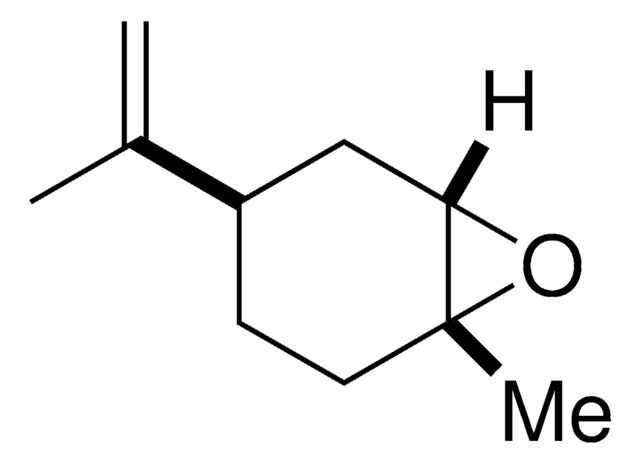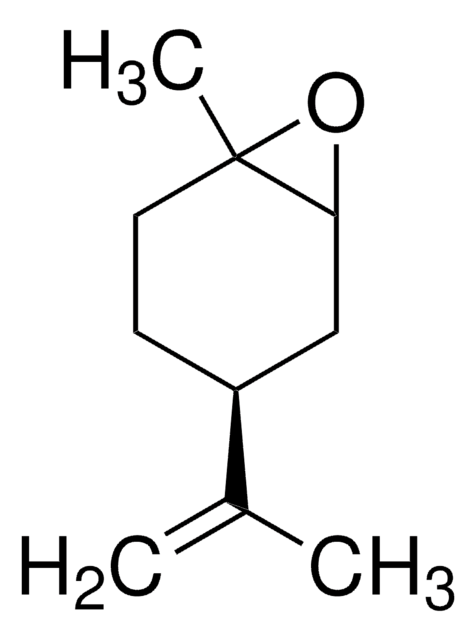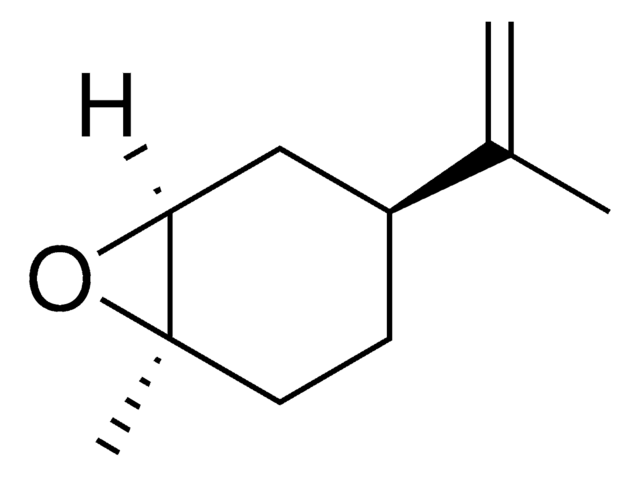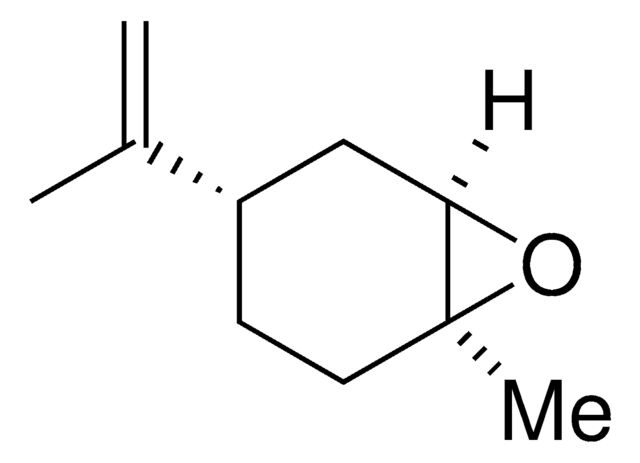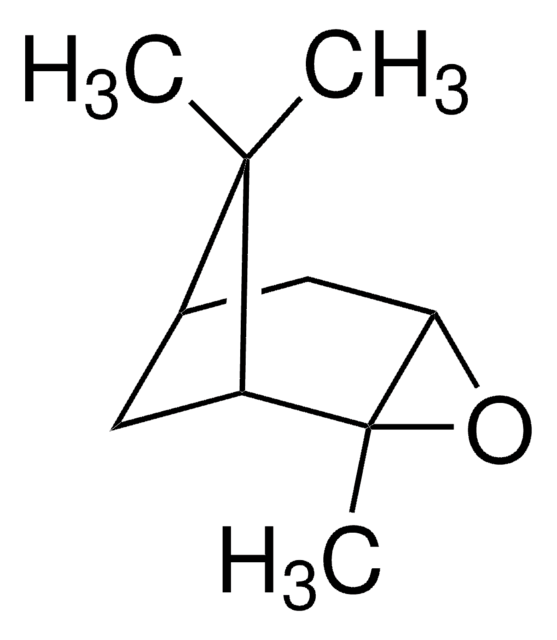921459
trans-(+)-limonene oxide
Sinónimos:
(1S,4R,6R)-4-Isopropenyl-1-methyl-7-oxabicyclo[4.1.0]heptane
About This Item
Productos recomendados
Formulario
liquid
Nivel de calidad
grupo funcional
ether
cadena SMILES
O1[C@@]2([C@H]1C[C@@H](CC2)C(=C)C)C
InChI
1S/C10H16O/c1-7(2)8-4-5-10(3)9(6-8)11-10/h8-9H,1,4-6H2,2-3H3/t8-,9-,10+/m1/s1
Clave InChI
CCEFMUBVSUDRLG-BBBLOLIVSA-N
Aplicación
Producto relacionado
Código de clase de almacenamiento
10 - Combustible liquids
Clase de riesgo para el agua (WGK)
WGK 3
Punto de inflamabilidad (°F)
149.0 °F - closed cup
Punto de inflamabilidad (°C)
65 °C - closed cup
Elija entre una de las versiones más recientes:
Certificados de análisis (COA)
It looks like we've run into a problem, but you can still download Certificates of Analysis from our Documentos section.
Si necesita más asistencia, póngase en contacto con Atención al cliente
¿Ya tiene este producto?
Encuentre la documentación para los productos que ha comprado recientemente en la Biblioteca de documentos.
Nuestro equipo de científicos tiene experiencia en todas las áreas de investigación: Ciencias de la vida, Ciencia de los materiales, Síntesis química, Cromatografía, Analítica y muchas otras.
Póngase en contacto con el Servicio técnico
